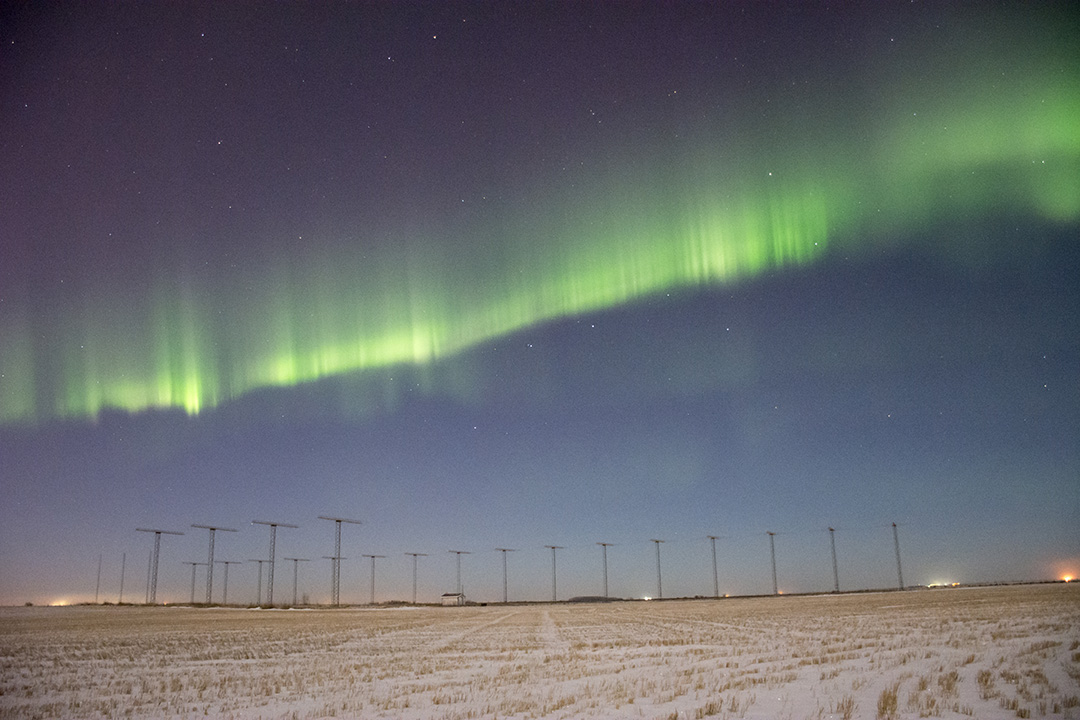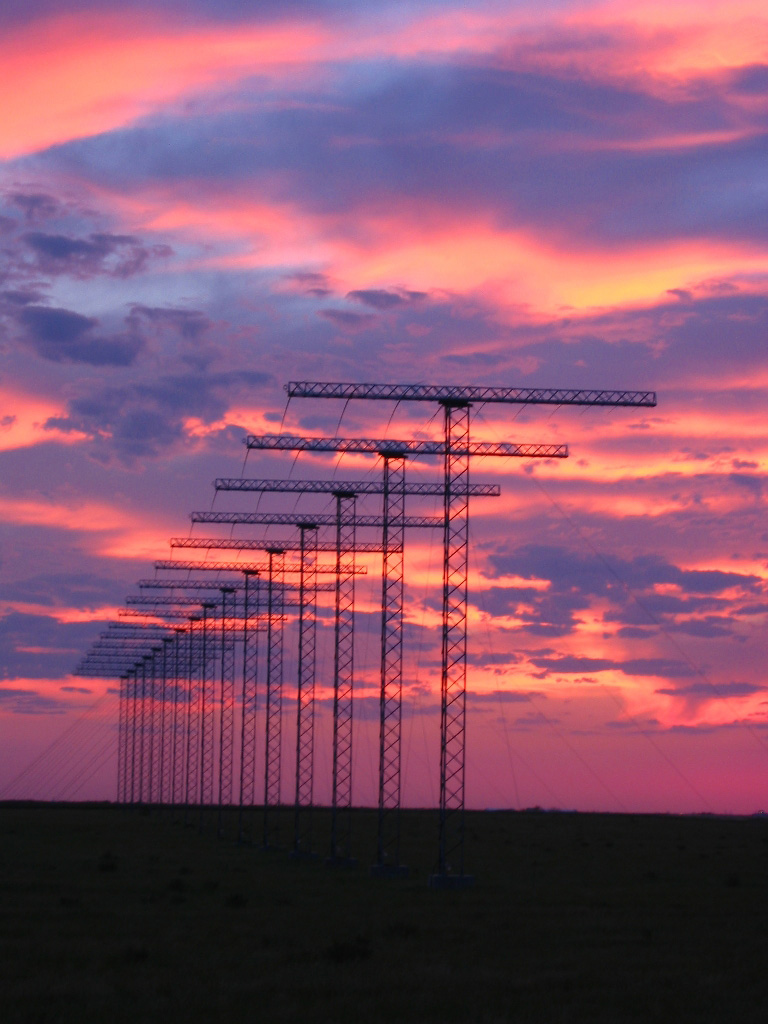
Here comes the sun: ISAS and SuperDARN scientists tracks Solar Cycle 25 at USask
From brilliant northern lights to knocking out the lights with power surge blackouts, solar flares and powerful plasma ejections from the sun can have dramatic and even damaging effects on Earth.
By James ShewagaFor the past 65 years, researchers in the University of Saskatchewan’s (USask) Institute of Space and Atmospheric Studies (ISAS) have kept an eye on the sky to study solar activity and the sun’s effect on the planet’s atmosphere. As the sun increases activity through to the year 2025 during the 11-year Solar Cycle 25, USask scientists will be monitoring space weather and looking for indications of geomagnetic storms that could play havoc with satellite transmissions and power grids on Earth.

“The biggest signal for us that something is going on is the aurora (northern lights),” said Dr. Dan Billett (PhD), a post-doctoral researcher with the USask-led Super Dual Auroral Radar Network (SuperDARN) Canada. “Saskatchewan is a pretty good place—especially in the northern parts—to see aurora. Large auroral displays are a good indication to us, and to the naked eye, that high-energy particles originating from the sun hit Earth not long ago. As the sun ramps up to the maximum of this solar cycle, we are going to see more aurora and there could be a greater risk of (damaging) events.”
An example of extreme solar story activity occurred in 1989 when a geomagnetic storm generated by the sun resulted in a major power blackout in Quebec and the northeastern United States on March 13. On August 16 that year, another solar storm disrupted communications and crashed computers, forcing the Toronto Stock Exchange to shut down trading.
“That is a really good example of what these things can do, and not just to a satellite, but actually affect your home, as happened in 1989 with the electrical blackout in Quebec,” said Billett. “That was caused by a very large coronal mass ejection (CME), which is when the sun emits high-energy particles. In 1989 in Quebec, it tripped all the circuits on the ground and caused a blackout of electrical power for about nine hours.”
In 1994, solar storms knocked out two $100-million Canadian ANIK satellites on the same day, disrupting television signals, telephone connections and computer transmissions across the country. Thousands of satellites currently in orbit upwards of 10,000 kilometres above Earth are particularly at risk, according to Billett.
“It happens to satellites frequently,” said Billett. “They are more exposed up in space, in the upper atmosphere. The main effect is radio blackouts when these solar flares from the sun hit the atmosphere, essentially changing the composition of the atmosphere by ionizing and changing the neutral particles to charged particles. And that can affect satellite transmissions, orbits and altitude and we can lose contact with satellites for hours, or in some cases, permanently.”

A recent scare came in 2012 when a massive solar storm similar in size to the damaging 1859 Carrington Event—the largest geomagnetic storm on record—was caused by an unusually large CME that hurtled towards Earth’s orbit, narrowly missing the planet by nine days, in a close call by space standards. Researchers note that a solar storm of that magnitude could cause billions of dollars in damage to power grids and communication systems worldwide.
Powerful solar activity can also create dangerous conditions for astronauts in orbit, particularly when conducting space walks outside the spacecraft. Billett said space weather conditions are considered for timing those excursions.
“Absolutely, it’s a huge consideration,” he said. “Spacecraft carrying people are designed with titanium to protect you from harmful radiation, but there is a huge risk as they go outside the spacecraft. They try to time it for when it is going to be quiet in terms of solar activity, but solar flares can be very unpredictable and they propagate throughout the solar system extremely quickly, so it is always a risk.”
Billett is part of a team of USask scientists in ISAS and SuperDARN Canada—featuring five radar systems across the country—working with colleagues around the world to study solar storms and atmospheric anomalies to gauge threats to power grids and communication systems, and provide advance warning of damaging disturbances. Led by director Dr. Kathryn McWilliams (PhD) of USask’s Department of Physics and Engineering Physics, SuperDARN recently received federal funding to continue research through to 2023.
“SuperDARN has been going since the early ’90s, so we have a lot of data extending over two full solar cycles, but it is really tricky trying to predict something is going to happen,” said Billett. “The best thing we can do with SuperDARN, in terms of forecasting, is to look for CME or solar flares and a few days later when it hits the Earth, see what happens in the SuperDARN data. We can then use that data to predict what will happen in the future when a similar CME hits.
“Space weather forecasting is a big field that is very hard to get right. But with enough data, you can see patterns and know that a CME of a certain size causes a certain effect and we can try to predict what’s going to happen in the future. And that’s what we are continually trying to improve.”

